A big Thank you to all WIForum Ambassadors, Team members, Advisors, CoWorking Spaces, Volunteers, Community Members, Country Representatives and helping hands We couldn’t be more thankful for every one of you in the big WIF family. Without your knowledge, inputs, generosity, and helping hands, we could not realize the vision of a world where prosperity is possible in all nations, through innovation and entrepreneurship – created within each country.
About doing good
Happy Birthday, World Innovations Forum! February 28, 2019 the foundation was registered with the vision to help nations become prosper through their own way of unfolding the power of innovation and entrepreneurship.
NOTE: everything that follows is through the lens of “economic development”. We are not talking about support organizations in disaster areas, humanitarian aid for health care, victims of war and so forth. Because the purpose of our organization is eradicating poverty, hunger and inequality by creating prosperity through innovation and entrepreneurship, similar to how developed nations evolved.
During our learning curve, we noticed that about US$4.7 trillion has been invested in the past 50 years in economic development. We also learned that the majority of people have not been very excited about the results. Initially, we looked at what other NGOs are doing and tried to blend in. That was a bad idea. Then we tried to find a balance between our entrepreneurial for-profit business with processes and mechanisms from non-profit organizations. It was no better. We read annual reports from similar organizations and realized that many just try very hard to be a good NGO. And a good “active” NGO is an organization that does exactly what a “giver” organization is looking for. Those giver organizations actually decide what active NGOs have to do in order to get funds. Well formulated goals, packed with keywords like “inclusion”, “climate”, “sustainability”, “equality”, “impact”, “social”, “approach”, “reporting”, “jobs created within 12 months”, “project run time 24 month” and so forth. We quickly recognized that instead of looking for funding for our unique concepts, we need to be a service organization for those who provide projects based on their research and desires of their donors. It’s a highly organized, massively structured multi-billion dollar operation. Active NGOs are super busy filing proposals for project requests, making sure they have the resources and a track record that indicates that the respective organization fulfilled the expectation of the giver organization in the past. To simplify the model, it’s a 4 tier monetary distribution structure: Donor – Distributor – Implementer – Beneficiary. This made NGOs more transparent, more efficient, more operational savvy, more trustworthy than ever before. And all have one common objective: HELPING those who are in need. This looks like a great model with little to no waste of money and the donations are really impact-focused. The first big question we had to answer: Are we willing to become an executing service organization for other NGOs. It was not exactly what we had in mind when we started. But we know, there is more to learn.
The receiver side
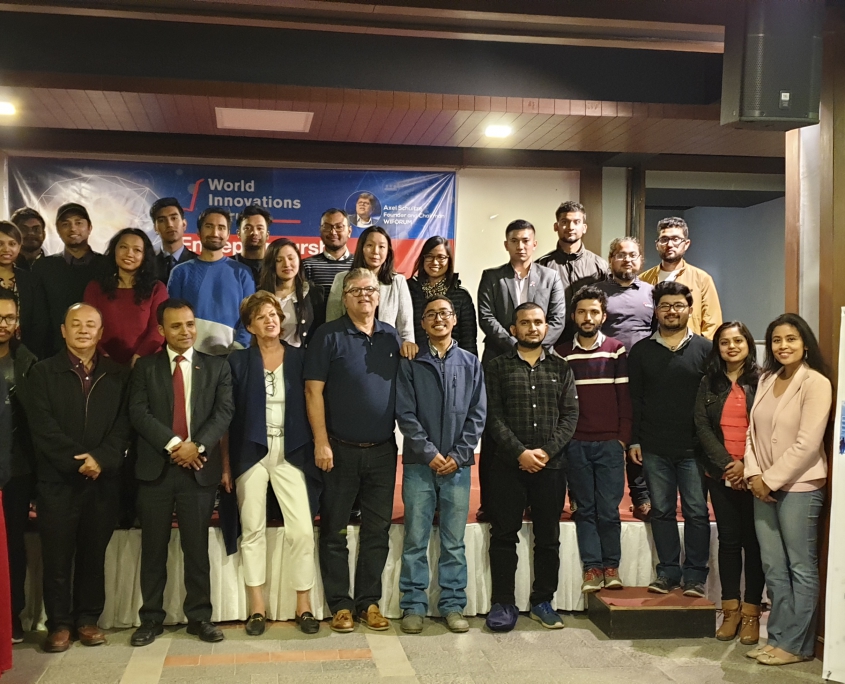 From day one till now, we decided to work on the ground. So when we visited countries and worked with young entrepreneurs or those who want to become one, we feel the heartbeat and learn how we can support them best. Amazingly, we experienced a warm welcome from entrepreneurs. We realized they rarely an opportunity to speak with experienced entrepreneurs from other countries. When we talked to local co-working spaces, accelerators and investors, we experienced a much more critical position. “What is your plan, what is your approach, what do you want to do?” our answer was always the same: “We have no plan, there is no approach, we don’t know what we will do. You will tell us how we can be helpful and we see what we can do”. We experienced an amazing transformation from a polite and professional welcome to a warm and friendly ‘love to hear your story’. Over time we heard lots of stories about support organization. To sum it up and make a narrative: “They come here, have a clear plan, based on what their sponsors tell them to do, execute “their plan”, make a lot of stirrup, then come with a team of professional photographers and camera men where everybody smiles, write reports and go back home to hunt for the next round of funding. We appreciate the help but often times it’s just too much work for us with no progress at all”. So why do you do that? we asked. Answer: We are not in a position to say no. Again, our own position was up for discussion: Are we in a position to say no and follow our own entrepreneurial instincts? So far we met and spoke with roughly 1,000 entrepreneurs and startups from a variety of countries including Nepal, Vietnam, Cambodia, Taiwan, Singapore, South Korea, Japan, Nigeria, Ghana, Uganda, Kenya, South Africa, Peru, and a few others. We met with about 50 investors and investor networks, more than 50 co-working spaces, universities other enablers and with several leading politicians in various capacities. We ran two accelerator programs and a series of entrepreneurs workshops. The feedback was inspiring and moving.
From day one till now, we decided to work on the ground. So when we visited countries and worked with young entrepreneurs or those who want to become one, we feel the heartbeat and learn how we can support them best. Amazingly, we experienced a warm welcome from entrepreneurs. We realized they rarely an opportunity to speak with experienced entrepreneurs from other countries. When we talked to local co-working spaces, accelerators and investors, we experienced a much more critical position. “What is your plan, what is your approach, what do you want to do?” our answer was always the same: “We have no plan, there is no approach, we don’t know what we will do. You will tell us how we can be helpful and we see what we can do”. We experienced an amazing transformation from a polite and professional welcome to a warm and friendly ‘love to hear your story’. Over time we heard lots of stories about support organization. To sum it up and make a narrative: “They come here, have a clear plan, based on what their sponsors tell them to do, execute “their plan”, make a lot of stirrup, then come with a team of professional photographers and camera men where everybody smiles, write reports and go back home to hunt for the next round of funding. We appreciate the help but often times it’s just too much work for us with no progress at all”. So why do you do that? we asked. Answer: We are not in a position to say no. Again, our own position was up for discussion: Are we in a position to say no and follow our own entrepreneurial instincts? So far we met and spoke with roughly 1,000 entrepreneurs and startups from a variety of countries including Nepal, Vietnam, Cambodia, Taiwan, Singapore, South Korea, Japan, Nigeria, Ghana, Uganda, Kenya, South Africa, Peru, and a few others. We met with about 50 investors and investor networks, more than 50 co-working spaces, universities other enablers and with several leading politicians in various capacities. We ran two accelerator programs and a series of entrepreneurs workshops. The feedback was inspiring and moving.
The big drivers, and why innovation is zero
 Who drives the Trillion $ aid industry?
Who drives the Trillion $ aid industry?
Governments need to balance out between public interest (tax payer money), national interest, and economic interest. So the donations are split into goals and objectives to balance the various interests, invested in countries that have a positive impact also back to the donating country. What they don’t DO is give money to those who work on the helper front. Nothing wrong with it, I believe, but good to know.
Individual Donors from average worker to ultra-wealthy billionaires. They usually can’t do anything themselves but feel the responsibility and donate from $1 to $1 billion and everything in between to help others. The most amazing aspects are 1) the gigantic amount of money that is aggregated so that we are close to actually really help everybody on earth and 2) how humans demonstrate an ability to organize themselves, their capital on a global scale almost seamlessly.
Corporate Donors from the developed world who either simply want to do good, or want to expand their business, access markets, identify new opportunities or any combination thereof. They either invest themselves or invest through those larger giver NGOs with clear goals.
Massive Giver NGOs with multi-billion $ portfolios who are extremely powerful, yet need to balance the interest of their donors, the political and geopolitical landscape, the overall trends like equality, climate etc., and make sure that the feedback from the “market” (the receiver or beneficiary) is positive and that the overhead to use the donations most effectively is tiny. They have come along way from: “most of the money is evaporating – like in the 1950’s “, to: “most of the money is actually invested in the causes and hit the space it is designated for – like today in the 2000’s”.
Operating Non-Profit Organizations with crystal clear designed requests from giver organization: what to do, where to do, how to do, how much budget is involved and the date they have to complete the task, It’s typically a 1, 2 or 4-year program.
Local Organizations, in the countries with the order to execute the plan they get from the Operating NGOs, funded by the big giver NGOs, with the donations from the individual or corporate sponsors. They have practically no flexibility and simply execute for the money they receive, in the way to program is structured. The sense for what’s needed on the ground is deteriorating and so is the true impact. The price for efficiency is in the end extremely high – non-profit or for-profit pay with the inability to innovate.
Disconnect
 The disconnect between donations and real help is growing. Over the holidays 2019/2020 we felt that we either find a radically different model or freeze the operation until somebody else is coming up with a better idea. Since no model was in sight and we experienced the deep frustration from other organizations, we decided to use our own innovation design techniques to explore alternative ways. As a first step, we disconnected ourselves from the conventional NGO space in favor of the actual beneficiaries we live for. The goal is to overcome the problematic “disconnect” from the group of people we want to help and find a modus operandi to finance the organization in a different way. With that we did a few things that should help us think on different levels:
The disconnect between donations and real help is growing. Over the holidays 2019/2020 we felt that we either find a radically different model or freeze the operation until somebody else is coming up with a better idea. Since no model was in sight and we experienced the deep frustration from other organizations, we decided to use our own innovation design techniques to explore alternative ways. As a first step, we disconnected ourselves from the conventional NGO space in favor of the actual beneficiaries we live for. The goal is to overcome the problematic “disconnect” from the group of people we want to help and find a modus operandi to finance the organization in a different way. With that we did a few things that should help us think on different levels:
1) We removed the term NGO from our entire communication.
2) We made sure that – no matter what we do – we do not lose sight of our original vision.
3) We started to use our own model of innovative thinking to develop services and business models that make sense.
4) We crafted a whole new business model and will share details once it is more mature.
5) We accepted the risk, that by disrupting ourselves, we will lose most funding opportunities.
6) We decided to build partnerships with those who believe in the concept of a collective intellect, where 1+1 is more than 2.
We will publicly share our experience here on our blog for anybody who is interested in alternative business models and operations for their economic development focused non-profit organization.
7) In no way, we are disrespecting those on whose shoulders we are about to step. The evolution from random donation into random help organizations towards a more controlled and operation was of utmost importance for aggregating the capital to help with large scale projects. Yet the economy of scale as an optimum, not a maximum.
The New Model
- We focus everything we do on the target audience, the beneficiary, in our case the entrepreneurs. We also work intensely in collaboration with an enabler, people from co-working spaces, investors, mentors, universities who support the entrepreneurship development.
- We work with partners who buy into our vision, strategy, modus operandi, and business model. We are not available as a service resource for other organizations like we would not be a white-label manufacturer if we would be an enterprise.
- The business model we created is value-based like in any economic model. We feel that impact measurement will never be seriously acceptable to measure the value one provided. We expect each service having a value that can be charged that even the poorest can pay for. And if the beneficiary is only interested in our work if it is for free, we know there is no value and that would also indicate no impact. For instance in countries where people live off of $1 a day and need all their $30 to survive, we may still ask for 3 cent for our work, also in part to provide economic thinking. Since that would not cover our cost, we are still depending on donations and sponsorship. But those are not to help provide free work but to match and add to value for the beneficiaries.
- There are other activities like awareness creation and not directly monetizable activities. For these we look for sponsors like in any industry situation. If nobody is interested in supporting the awareness creation we may still receive donations, otherwise, our awareness campaign will just be very rudimentary. And that is OK.
There are more elements we are working on but for now, that is our alternative model for innovative non-profit organizations.
Next Steps
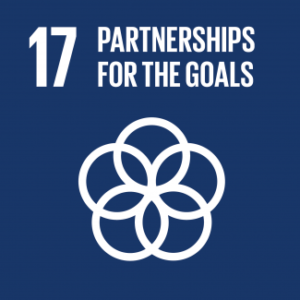 1) We believe in innovation on all levels – also for organization models.
1) We believe in innovation on all levels – also for organization models.
2) Connecting with a like-minded organization to think together is part of our next steps.
3) After learning, entrepreneurship is the mother of all prosperity, we will continue with that very model.
4) Our focus is exclusively on our work on the ground in the countries and support from those who think alike.
5) We will look or partnerships in the spirit of SDG 17 as we believe there is no NGO big enough to solve the world’s problems alone
6) Innovation in the NGO space is not only an organizational necessity but paramount to actually fulfill our goals.
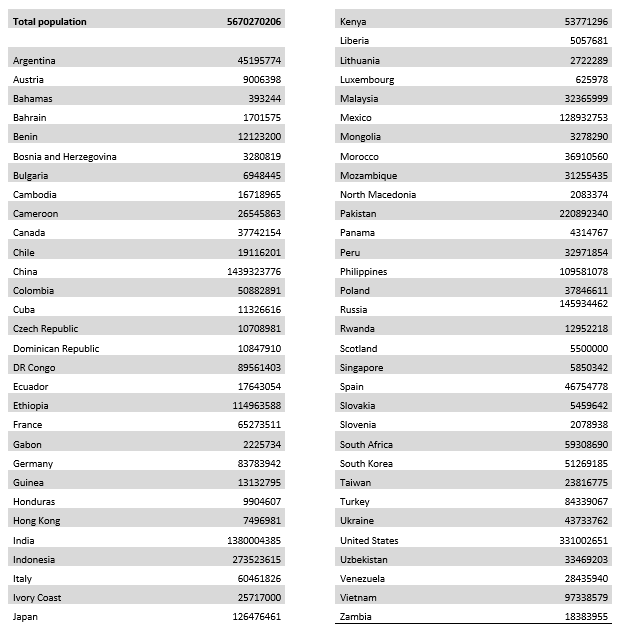
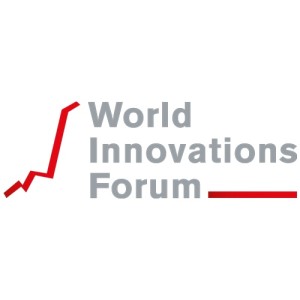

 Covid-19 is only one crisis of many in our near past – and you will learn to live with crises in the future. Moreover, you should make your startup crisis resistant.
Covid-19 is only one crisis of many in our near past – and you will learn to live with crises in the future. Moreover, you should make your startup crisis resistant.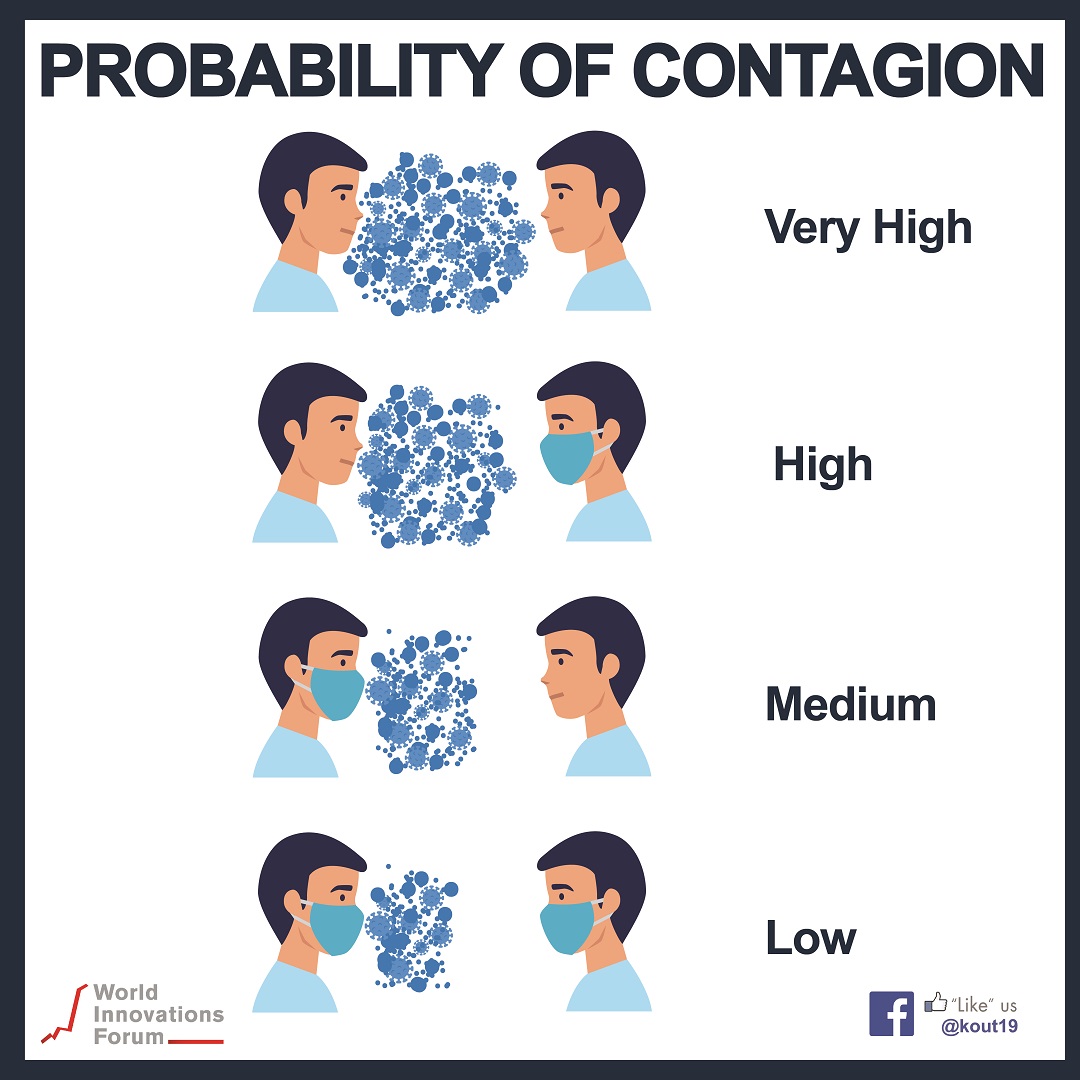

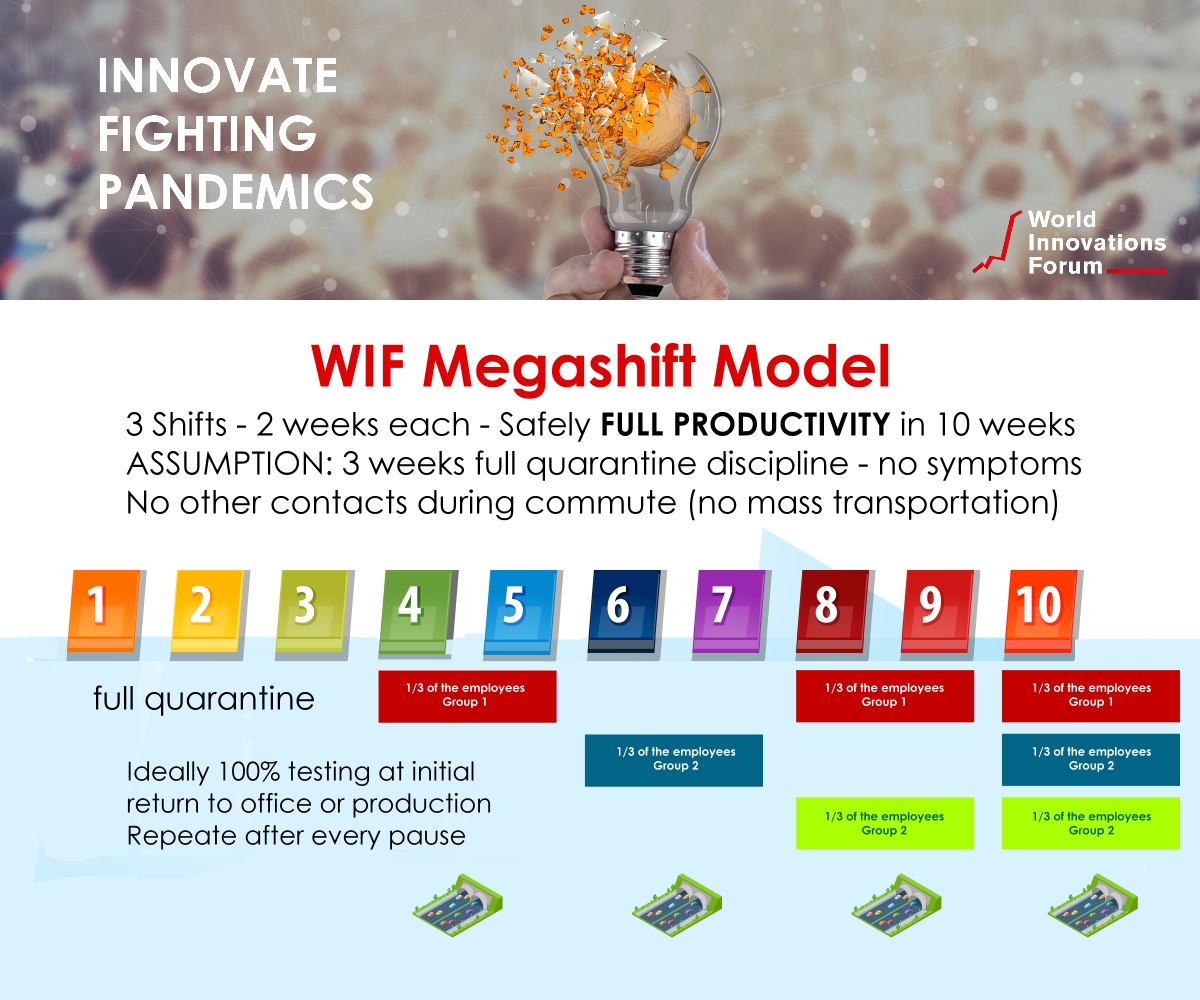

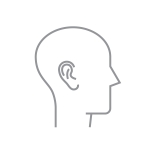 Many of us read the news and daily updates from around the world every morning. We know already what worked and what didn’t from China, from South Korea, from Singapore and many other Asian countries. But this is only if you speak English or are digital savvy enough to automatically translate everything into your language. In recent discussions we learned that far more than half of the governments in the world do not speak english. They are dependent of what others tell them what is happening. Also those who are looking for test equipment, treatment, best practices, what type of hygiene measures they may consider long before the rest of the word slowly woke up. The English language no longer is the universal language for doing business around the globe, it is the number one language of communication also in any kind of crisis. Speaking one common language – at least as a second language – is paramount for our survival, not only in business but also in our general life. And it will also closing the gap between rich and poor, My proposal for the United Nation: Making “English as a common language on earth” the SDG #18.
Many of us read the news and daily updates from around the world every morning. We know already what worked and what didn’t from China, from South Korea, from Singapore and many other Asian countries. But this is only if you speak English or are digital savvy enough to automatically translate everything into your language. In recent discussions we learned that far more than half of the governments in the world do not speak english. They are dependent of what others tell them what is happening. Also those who are looking for test equipment, treatment, best practices, what type of hygiene measures they may consider long before the rest of the word slowly woke up. The English language no longer is the universal language for doing business around the globe, it is the number one language of communication also in any kind of crisis. Speaking one common language – at least as a second language – is paramount for our survival, not only in business but also in our general life. And it will also closing the gap between rich and poor, My proposal for the United Nation: Making “English as a common language on earth” the SDG #18. In only 10 weeks the world has turned to digital faster than all the efforts of even the most powerful governments on earth in the last 10 years. Companies with a home office concept could almost seamlessly transition from their office buildings to home offices. But going digital is not only an emergency action to stay in business: In the past few weeks we had far more client interactions online than ever before. Trying to setup a meeting, finally finding a convenient day and time, traveling an hour to do a meeting for another hour is over. TODAY: “Do you have a moment?” – “Sure – give me 5 minute” – “How can I help” – We have this and that issue … Ok ….” 15 minute later, everything was done. And not next week – but immediately. We accelerated work by 2.5 hours and reduced the “problem to solution” time by maybe a week. In our particular case run so called demo days after each startup acceleration program. We rent a venue invite investors and let our entrepreneurs present in front of approximately 15 to 25 investors sometimes a little more. This year we just invited 800 investors from around the world and have already more registrations than ever before. This year, the Demo Day is digital and everybody can join it on April 8, from wherever they are. A huge advantage. Of course this is no real substitute for face to face meetings but it is a powerful option that we will consider in the future. And we also have our global 3 day WIForum Digital 2020 Conference this year in June. 3 days and we expect 2,000 people from over 40 countries. Of course it is fully digital. In countries where Corona may have been enough contained we will do – like last time – public viewings in the respective cities, have about 40 – 50 speakers, including governments, universities and many top talented innovative businesses. All digital, and on top of all, no Co² emission, no travel no energy expenditure, maximum cost reduction and more. Even after corona is contained our work life will never be like it was. We learned to become more independent and far more efficient if we put our old “protocols” aside and spend time for meetings when and wherever, get problems solved immediately and build relations that go far deeper than ever before. However what is an advantage for some will become an even bigger disadvantage for the slow and far less agile businesses.
In only 10 weeks the world has turned to digital faster than all the efforts of even the most powerful governments on earth in the last 10 years. Companies with a home office concept could almost seamlessly transition from their office buildings to home offices. But going digital is not only an emergency action to stay in business: In the past few weeks we had far more client interactions online than ever before. Trying to setup a meeting, finally finding a convenient day and time, traveling an hour to do a meeting for another hour is over. TODAY: “Do you have a moment?” – “Sure – give me 5 minute” – “How can I help” – We have this and that issue … Ok ….” 15 minute later, everything was done. And not next week – but immediately. We accelerated work by 2.5 hours and reduced the “problem to solution” time by maybe a week. In our particular case run so called demo days after each startup acceleration program. We rent a venue invite investors and let our entrepreneurs present in front of approximately 15 to 25 investors sometimes a little more. This year we just invited 800 investors from around the world and have already more registrations than ever before. This year, the Demo Day is digital and everybody can join it on April 8, from wherever they are. A huge advantage. Of course this is no real substitute for face to face meetings but it is a powerful option that we will consider in the future. And we also have our global 3 day WIForum Digital 2020 Conference this year in June. 3 days and we expect 2,000 people from over 40 countries. Of course it is fully digital. In countries where Corona may have been enough contained we will do – like last time – public viewings in the respective cities, have about 40 – 50 speakers, including governments, universities and many top talented innovative businesses. All digital, and on top of all, no Co² emission, no travel no energy expenditure, maximum cost reduction and more. Even after corona is contained our work life will never be like it was. We learned to become more independent and far more efficient if we put our old “protocols” aside and spend time for meetings when and wherever, get problems solved immediately and build relations that go far deeper than ever before. However what is an advantage for some will become an even bigger disadvantage for the slow and far less agile businesses. One of the new key words. People are isolated at home and lack of social interactions. Its a very uncomfortable situation to be alone – not only in times of an pandemic. Yet. also here we quickly learned to hang out with friends online. And not just adults but also kids – at least those who have been online before. Multi Player Games and all the other digital entertainment out there comes extremely hande when a whole family stays home. BUT not only to shut of the kids – but to to give them an opportunity to learn about social connections in the digital world. I have been working in the social media world since its inception in 2003. Today, 17 years later, I have an equal amount of friends that I never met face to face in my entire life. From some I know far more what is going on in their lives than from some of my family members. My old friend Des Walsh, who I never met in person but have been connected for 10 years now, is older than 99% of my oldest local friends who never touched Facebook. Social Distancing is a problem that we can overcome. And those who have the experience for years, learned about digital body language, read the mind of somebody not by seeing their facial expressions but writing style would certainly not suffer social distancing at all. Whether in business or in our private lives, we learned already so much about others from the daily interactions in the online world that we get a completely different perspective of the media.
One of the new key words. People are isolated at home and lack of social interactions. Its a very uncomfortable situation to be alone – not only in times of an pandemic. Yet. also here we quickly learned to hang out with friends online. And not just adults but also kids – at least those who have been online before. Multi Player Games and all the other digital entertainment out there comes extremely hande when a whole family stays home. BUT not only to shut of the kids – but to to give them an opportunity to learn about social connections in the digital world. I have been working in the social media world since its inception in 2003. Today, 17 years later, I have an equal amount of friends that I never met face to face in my entire life. From some I know far more what is going on in their lives than from some of my family members. My old friend Des Walsh, who I never met in person but have been connected for 10 years now, is older than 99% of my oldest local friends who never touched Facebook. Social Distancing is a problem that we can overcome. And those who have the experience for years, learned about digital body language, read the mind of somebody not by seeing their facial expressions but writing style would certainly not suffer social distancing at all. Whether in business or in our private lives, we learned already so much about others from the daily interactions in the online world that we get a completely different perspective of the media. Another aspect of life is our ability to innovate. In times of a crisis innovation pops right and left. Companies that seem to unable to innovate get all of a sudden very creative. Instead of building car parts they build facial masks to protect people because they know how to build filters. Others get great ideas to build simple but globally accessible apps showing latest discoveries about the virus and best practices to protect one another. We created an initiative “Innovate Fighting Pandemics” to inspire innovative mind, from all trades to share their ideas so that others can find solutions to problems they may have. What we all learned is that innovation is not a reserved domain for highly educated scientists but we all are innovative, as long as we give our mind the free space to think. And in times like now it is simply accelerating for survival – why not always give our mind the freedom to go crazy.
Another aspect of life is our ability to innovate. In times of a crisis innovation pops right and left. Companies that seem to unable to innovate get all of a sudden very creative. Instead of building car parts they build facial masks to protect people because they know how to build filters. Others get great ideas to build simple but globally accessible apps showing latest discoveries about the virus and best practices to protect one another. We created an initiative “Innovate Fighting Pandemics” to inspire innovative mind, from all trades to share their ideas so that others can find solutions to problems they may have. What we all learned is that innovation is not a reserved domain for highly educated scientists but we all are innovative, as long as we give our mind the free space to think. And in times like now it is simply accelerating for survival – why not always give our mind the freedom to go crazy. Another learning we already can envision is to make our business processes and production structures far more flexible in thinking and in operation. Right now, today Mar 27, many companies ca no longer produce because people are at home for their own safety and cannot produce an automobile from their home office. But why is it that brutal? Because we think in maximum “employee utilisation”. The production runs are so hyper optimized that there is not even a “Plan B”. Instead of stopping the motion to zero, we can get a bit smarter. We can already today let 50% of the employees come back who have for sure no symptoms. Ask them to avoid mass transportation and go with individual transportation to the manufacturing plant. Likely hood that they catch a virus is low and cross contamination with those who have been healthy at home for two weeks extremely low. Two weeks later we run the second “mega-shift” and ask the other group to go back to work. Four weeks later we most likely are back to full production.Obviously it takes some major co-ordination, super machine and workplace cleaning in between shift but also during the shifts, orchestrating the right people for a half production load and so forth but that Plan B is probably with millions of dollars per day worth of business loss. Post Corona we will never go back to static operations but will want to consider more flexibility, driving more agility and giving the organization a better competitiveness.
Another learning we already can envision is to make our business processes and production structures far more flexible in thinking and in operation. Right now, today Mar 27, many companies ca no longer produce because people are at home for their own safety and cannot produce an automobile from their home office. But why is it that brutal? Because we think in maximum “employee utilisation”. The production runs are so hyper optimized that there is not even a “Plan B”. Instead of stopping the motion to zero, we can get a bit smarter. We can already today let 50% of the employees come back who have for sure no symptoms. Ask them to avoid mass transportation and go with individual transportation to the manufacturing plant. Likely hood that they catch a virus is low and cross contamination with those who have been healthy at home for two weeks extremely low. Two weeks later we run the second “mega-shift” and ask the other group to go back to work. Four weeks later we most likely are back to full production.Obviously it takes some major co-ordination, super machine and workplace cleaning in between shift but also during the shifts, orchestrating the right people for a half production load and so forth but that Plan B is probably with millions of dollars per day worth of business loss. Post Corona we will never go back to static operations but will want to consider more flexibility, driving more agility and giving the organization a better competitiveness.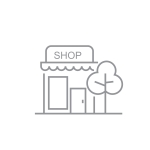 Small businesses, shops, retailer, reseller, and so forth have been struggling to stay alive, not able competing against the big e-commerce giants. For many it will be a sad ending as they just could not decide to think about smart alternatives they can offer to their customers. The retail market has changed, consumer behavior and desires advanced, but their payer did not. At the same time many, very fortunately, finally understood what customers want and shifted towards online offerings, home delivery, better logistics, better return policies so that ended up become far more competitive and customers find better services. Some countries blocked any innovation that put their small retailers in jeopardy. In times like right now is fires back badly. They have to spend more money to support the failing businesses and have missed the development they couldn’t stop anyway. E-commerce, fast home delivery, return policies and processes have improved more and faster in the past 10 weeks than in the last five years. Countries with weird import regulations, difficult taxation and more see their self sufficiency rate go much faster down than in other countries. Again – life post corona will never go back to what it was before.
Small businesses, shops, retailer, reseller, and so forth have been struggling to stay alive, not able competing against the big e-commerce giants. For many it will be a sad ending as they just could not decide to think about smart alternatives they can offer to their customers. The retail market has changed, consumer behavior and desires advanced, but their payer did not. At the same time many, very fortunately, finally understood what customers want and shifted towards online offerings, home delivery, better logistics, better return policies so that ended up become far more competitive and customers find better services. Some countries blocked any innovation that put their small retailers in jeopardy. In times like right now is fires back badly. They have to spend more money to support the failing businesses and have missed the development they couldn’t stop anyway. E-commerce, fast home delivery, return policies and processes have improved more and faster in the past 10 weeks than in the last five years. Countries with weird import regulations, difficult taxation and more see their self sufficiency rate go much faster down than in other countries. Again – life post corona will never go back to what it was before. The 7 virtues of idea validation
The 7 virtues of idea validation From day one till now, we decided to work on the ground. So when we visited countries and worked with young entrepreneurs or those who want to become one, we feel the heartbeat and learn how we can support them best. Amazingly, we experienced a warm welcome from entrepreneurs. We realized they rarely an opportunity to speak with experienced entrepreneurs from other countries. When we talked to local co-working spaces, accelerators and investors, we experienced a much more critical position. “What is your plan, what is your approach, what do you want to do?” our answer was always the same: “We have no plan, there is no approach, we don’t know what we will do. You will tell us how we can be helpful and we see what we can do”. We experienced an amazing transformation from a polite and professional welcome to a warm and friendly ‘love to hear your story’. Over time we heard lots of stories about support organization. To sum it up and make a narrative: “They come here, have a clear plan, based on what their sponsors tell them to do, execute “their plan”, make a lot of stirrup, then come with a team of professional photographers and camera men where everybody smiles, write reports and go back home to hunt for the next round of funding. We appreciate the help but often times it’s just too much work for us with no progress at all”. So why do you do that? we asked. Answer: We are not in a position to say no. Again, our own position was up for discussion: Are we in a position to say no and follow our own entrepreneurial instincts? So far we met and spoke with roughly 1,000 entrepreneurs and startups from a variety of countries including Nepal, Vietnam, Cambodia, Taiwan, Singapore, South Korea, Japan, Nigeria, Ghana, Uganda, Kenya, South Africa, Peru, and a few others. We met with about 50 investors and investor networks, more than 50 co-working spaces, universities other enablers and with several leading politicians in various capacities. We ran two accelerator programs and a series of entrepreneurs workshops. The feedback was inspiring and moving.
From day one till now, we decided to work on the ground. So when we visited countries and worked with young entrepreneurs or those who want to become one, we feel the heartbeat and learn how we can support them best. Amazingly, we experienced a warm welcome from entrepreneurs. We realized they rarely an opportunity to speak with experienced entrepreneurs from other countries. When we talked to local co-working spaces, accelerators and investors, we experienced a much more critical position. “What is your plan, what is your approach, what do you want to do?” our answer was always the same: “We have no plan, there is no approach, we don’t know what we will do. You will tell us how we can be helpful and we see what we can do”. We experienced an amazing transformation from a polite and professional welcome to a warm and friendly ‘love to hear your story’. Over time we heard lots of stories about support organization. To sum it up and make a narrative: “They come here, have a clear plan, based on what their sponsors tell them to do, execute “their plan”, make a lot of stirrup, then come with a team of professional photographers and camera men where everybody smiles, write reports and go back home to hunt for the next round of funding. We appreciate the help but often times it’s just too much work for us with no progress at all”. So why do you do that? we asked. Answer: We are not in a position to say no. Again, our own position was up for discussion: Are we in a position to say no and follow our own entrepreneurial instincts? So far we met and spoke with roughly 1,000 entrepreneurs and startups from a variety of countries including Nepal, Vietnam, Cambodia, Taiwan, Singapore, South Korea, Japan, Nigeria, Ghana, Uganda, Kenya, South Africa, Peru, and a few others. We met with about 50 investors and investor networks, more than 50 co-working spaces, universities other enablers and with several leading politicians in various capacities. We ran two accelerator programs and a series of entrepreneurs workshops. The feedback was inspiring and moving. Who drives the Trillion $ aid industry?
Who drives the Trillion $ aid industry? The disconnect between donations and real help is growing. Over the holidays 2019/2020 we felt that we either find a radically different model or freeze the operation until somebody else is coming up with a better idea. Since no model was in sight and we experienced the deep frustration from other organizations, we decided to use our own innovation design techniques to explore alternative ways. As a first step, we disconnected ourselves from the conventional NGO space in favor of the actual beneficiaries we live for. The goal is to overcome the problematic “disconnect” from the group of people we want to help and find a modus operandi to finance the organization in a different way. With that we did a few things that should help us think on different levels:
The disconnect between donations and real help is growing. Over the holidays 2019/2020 we felt that we either find a radically different model or freeze the operation until somebody else is coming up with a better idea. Since no model was in sight and we experienced the deep frustration from other organizations, we decided to use our own innovation design techniques to explore alternative ways. As a first step, we disconnected ourselves from the conventional NGO space in favor of the actual beneficiaries we live for. The goal is to overcome the problematic “disconnect” from the group of people we want to help and find a modus operandi to finance the organization in a different way. With that we did a few things that should help us think on different levels: